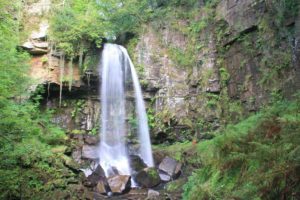 COVID-19 has driven a surge in outdoor activities within the UK as people have taken to green spaces and reconnected with nature. The pandemic has forced people to interact with familiar surroundings in new ways and heightened our appreciation of local parks, cycling routes and waterfalls.
COVID-19 has driven a surge in outdoor activities within the UK as people have taken to green spaces and reconnected with nature. The pandemic has forced people to interact with familiar surroundings in new ways and heightened our appreciation of local parks, cycling routes and waterfalls.
During the first coronavirus lockdown, many people filled their free time with exercising close to home as travel restrictions limited other leisure activities.
Read on for facts and figures…
Around one in three workers (33%) were based exclusively at home in the spring 2020 lockdown (Opinions and Lifestyle Survey, May 2020); this had dropped to around one in five (20%) by late summer (August 2020), when restrictions had been eased.
During April 2021, 28% of working adults worked exclusively from home. More than three-quarters (76%) of people who only worked from home in this period had left home for exercise in the previous seven days, compared with 52% of people who only travelled to work. Those working from home were also more likely to visit a park or local green space than those who travelled to work (45% compared with 30%).
Along with the rise in outdoor exercise, people’s interest in nature surged. In May 2020, 36% of people responding to the People and Nature Survey by Natural England said they were spending more time outside during the pandemic than before. This rose to 46% in July 2020.
Isolation, along with other factors, contributed to a decline in mental health over the last year. Around 9 in 10 people surveyed in May 2020 agreed that natural spaces are good for mental health and wellbeing. More than 40% noticed that nature, wildlife, and visiting local green and natural spaces have been even more important to their wellbeing since the coronavirus restrictions began. These percentages have remained stable throughout the pandemic.
However, not everyone has equal access to the green space they need to improve their personal wellbeing. There is a clear connection between how people have been using the outdoors under coronavirus restrictions and the distance between green spaces and their doorstep.
In lockdown, those living closer to their nearest public green space were more likely to visit than those living further away. In the summer, after lockdown, the opposite was true, with people living further away from their nearest green space more likely to visit than those living closer.
However, the interest in nature that we saw in spring and summer 2020 has not necessarily carried through to winter 2020 and early 2021. Many of the lifestyle changes adopted during the first national lockdown had slipped, with people instead spending more time watching television, which may be unsurprising because of the colder and darker weather.
The people that are maintaining lockdown lifestyle changes, such as increased exercise and visits to green spaces, are those whose circumstances most allow them to, such as those whose workplaces decide to offer home working permanently. What we still do not yet know is whether the changes brought on by lockdown will be a temporary trend, or a new way of life.
![]()


